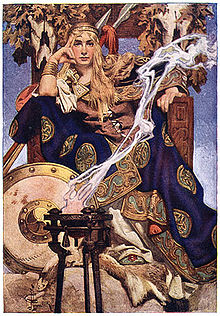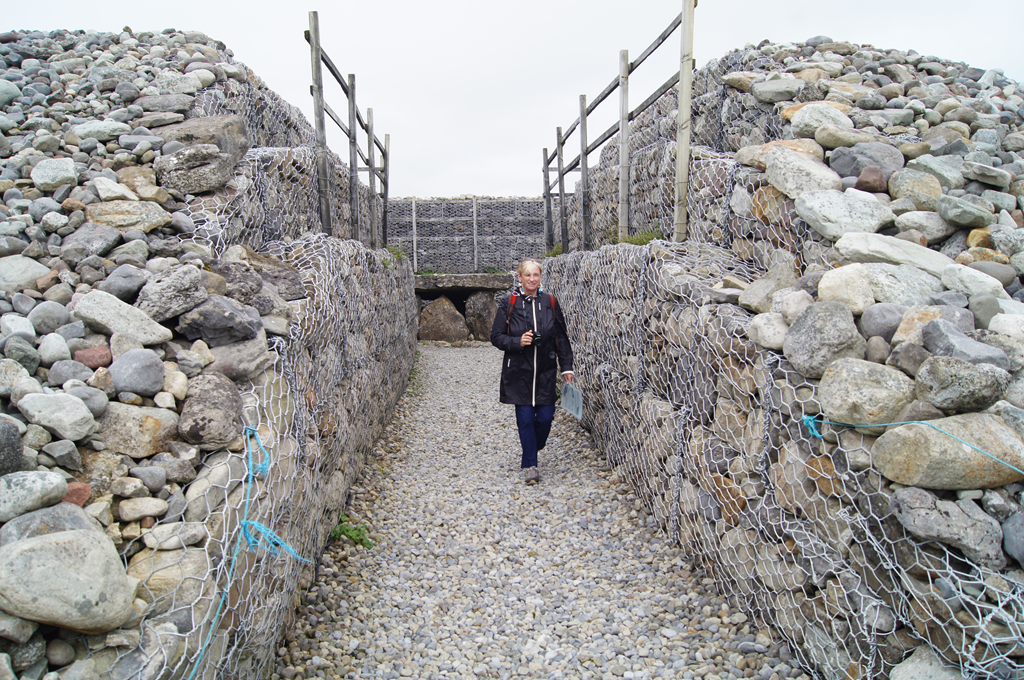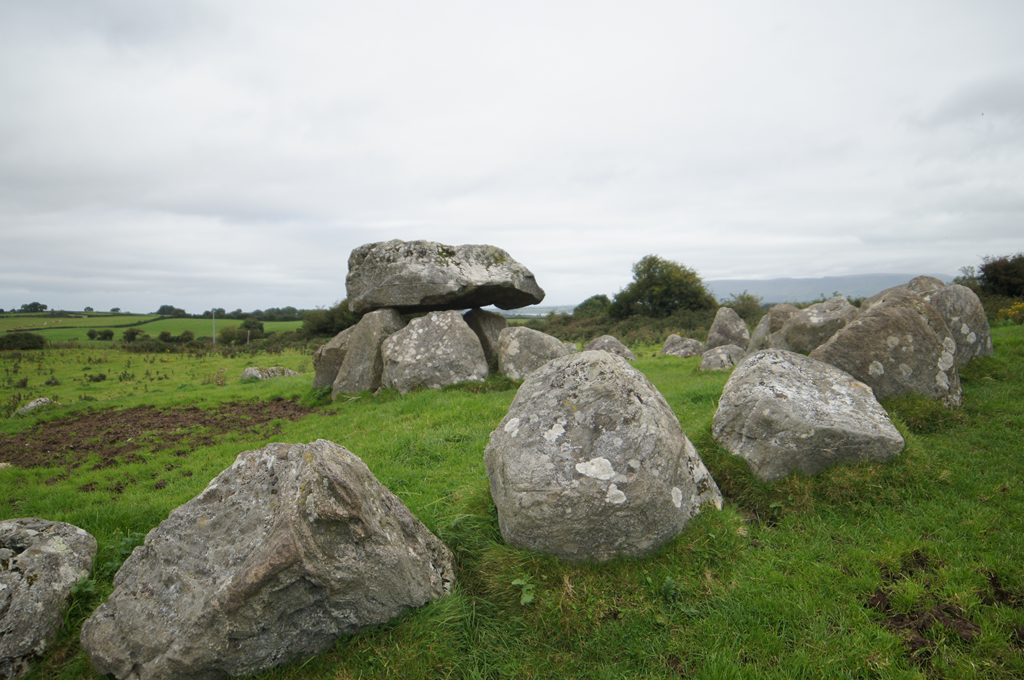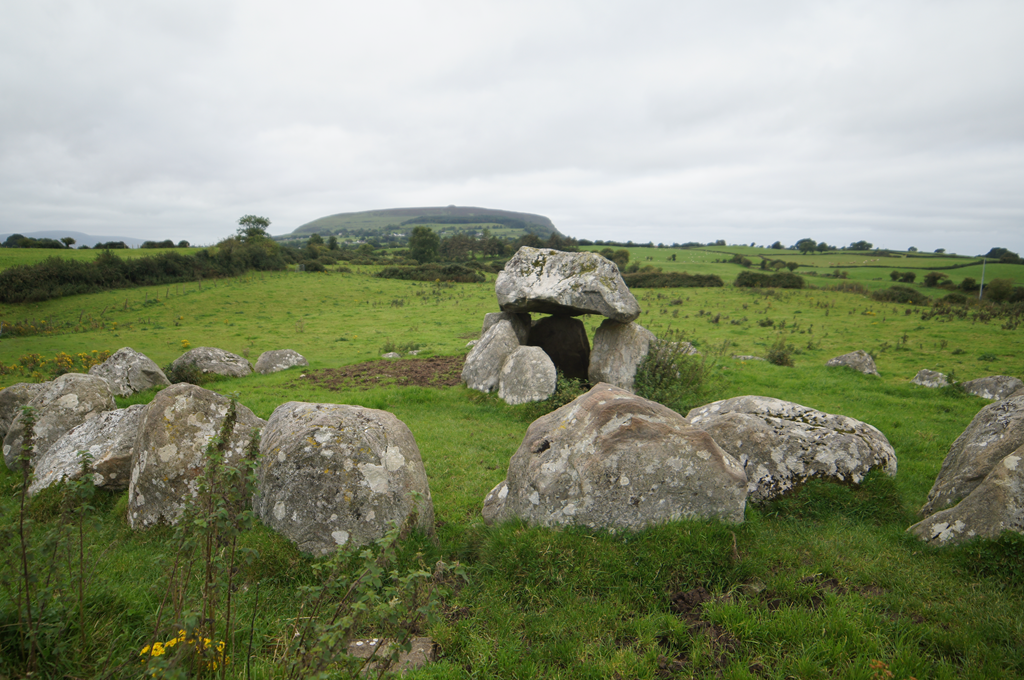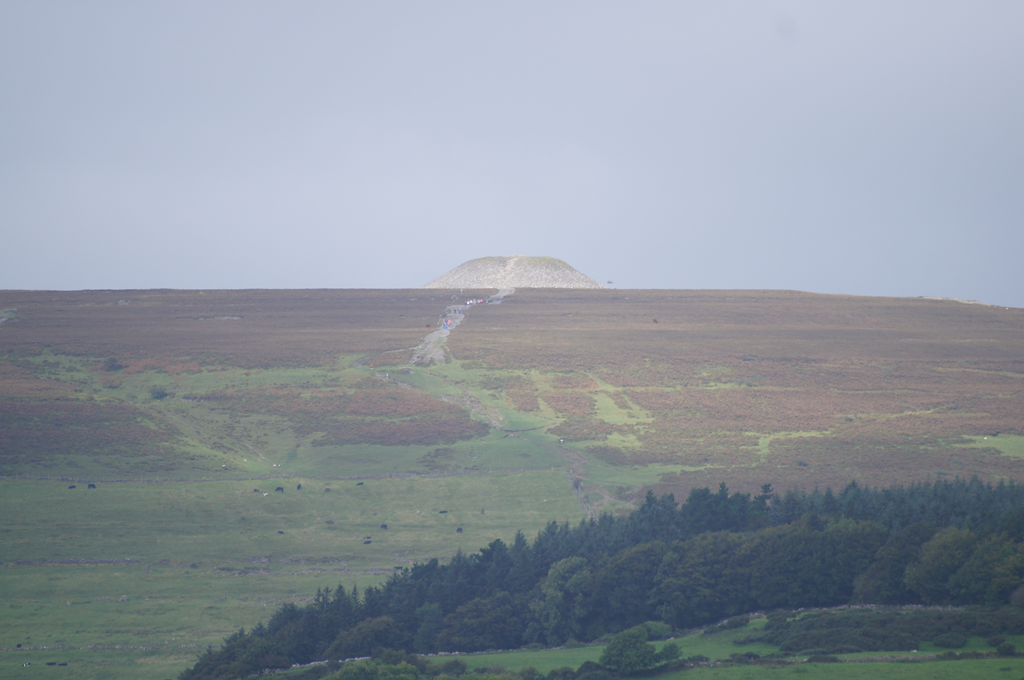This is part of a series on a 3-week, 3050-km road trip across Wales and Republic of Ireland that my parents, my aunt and I took to retrace some family roots.
In the stygian darkness of her stone tomb, Maebh slumbers in state.
On her head is a crown, in her hands a sword, and at her feet, a war chariot. She is buried upright, facing the distant lands of her Ulster enemies, in eternal vigilance.
Or so we must imagine, because her 40-foot burial cairn, at Knocknarea near Sligo, has never been excavated. It’s possible Ireland’s famous warrior queen is not even there!
Carrowmore Megalithic Tombs
Ireland has a number of impressive stone monuments which in Neolithic times formed a “ritualistic landscape”, meaning a focal point of major religious, political, and social importance.
When we visited the town of Sligo, we explored Carrowmore, which is less than 10 minutes drive from the centre of town. Carrowmore contains at least 30 known monuments and appears to be one of the largest of these ritual landscapes. Many of its structures date back to at least 3750 BC.
The monuments themselves are called “passage tombs” but they may not always have contained bodies – instead holding cremated remains, as well as ritual offerings of food, tools, and ceremonial goods. The basic structure of a tomb has an outer wall of boulders that protects and holds in place five large standing stones which in turn surround a small inner burial chamber. The chamber is capped or covered with stone slabs or a large dolmen.
A large, partially-excavated barrow at the site demonstrates how the larger passage tombs are organized.
Over time, many of these outer monuments have collapsed or been turned over by farmers, leaving a tumble of rocks and bare traces of what existed before. In other cases, the inner circle is intact and remains capped. Fragments of mussels, oysters, quartz fragments and other grave goods are often discovered in the ground near these stone cairns.
It’s not fully clear why these megalithic structures were built. They are found all over Europe and were used for thousands of years. Often they form visible parts of the landscape and would have made dramatic markers for travelers. In other cases they appear to have been on low-lying flat ground, surrounded by forests, and would only have been visible to people nearby.
Many of the structures at these sites demonstrate a sophisticated awareness of architecture, art, and the natural world, such as at New Grange where once a year the light of the Winter Solstice shines right up the passage tomb and illuminates the central chamber. Customs and religious practices may have varied from site to site, or shared similarities. Over thousands of years, local variances would have crept in. Archaeological evidence shows that sometimes sites went dormant, then were re-occupied by later generations.
Since we have no contemporary records of their exact purpose(s), we can only speculate.
The Life and Legend of Queen Maebh
From Carrowmore, we could see Maebh’s burial mound, towering over the countryside.
As we watched, groups of tourists toiled their way up the hillside to the outside of the mound.
Maebh is a compelling figure in Irish myth – married to many famous and powerful kings, she refused to take second place to any of them. She took many lovers over the course of her life, and she made at least one husband promise to be without fear, meanness, or jealousy. She started the Cattle Raid of Cooley because her husband had one more stud bull than she did – so in order to attain equal wealth and status, she raided Ulster to steal their king’s prize bull. A legendary battle between her army and the hero Cuchulainn then ensued.
Maebh was finally slain by the son of a rival she had murdered. The son hit her with a slingshot while she bathed.
Her story is amazing. Netflix and the Irish Film Board should start filming – I would watch that series! But, it’s not clear if Maebh ever really existed. Many of the legends around her are clearly tall tales.
However, the Táin Bó Cúalnge (the story of the Cattle Raid of Cooley) was analyzed by Padraig Mac Carron and Ralph Kenna, using a mathematical approach to examine the social networks in The Iliad, Beowulf, and Táin Bó Cúalnge. Tantalisingly, they found that:
in the Irish myth, the top six characters [including Maebh] are all unrealistically well connected, giving it both fictional and real characteristics. But when we remove the weakest links between [398 other characters] and the Top 6, the narrative becomes…realistic…from a social-network view. Perhaps these characters are amalgams of a number of entities that were fused as the narrative was passed down orally.
Preserving the Past
At the Carrowmore visitor centre, run by the Office of Public Works, we asked a guide why Queen Maebh’s barrow hadn’t been excavated yet. He explained to us that Ireland is awash with history and ancient artifacts, and there is relatively little money available to explore and preserve them all.
In fact, they have such an abundance of ancient structures and artifacts that the general public may not see an urgent need to protect them all. He feels that more public education is needed on the importance of preserving this heritage. He illustrated this with a joke:
An Irish farmer is visiting a museum of antiquities when he knocks over an old vase, shattering it to pieces. The museum curator rushes over, and turns ghostly pale when he sees the irreparable damage.
“I’m very sorry, let me pay to replace it,” the farmer says.
“It’s 2000 years old!”, the curator replies indignantly.
“Ah, thank God,” says the farmer. “I was afraid it was brand new.”
The preservation of Carrowmore itself set an important legal precedent in 1989, when the Supreme Court ruled against a proposed municipal landfill that would have been placed only yards from the historic site. That judgement marked the first explicit legal protection in Ireland for the landscape surrounding a national historic monument. (“Carrowmore”; Wikipedia).
That’s good progress – because in a country awash with history and legend, there is always more to discover and protect.
Meanwhile, Warrior Queen Maebh waits in her hilltop tomb.
Or not.
